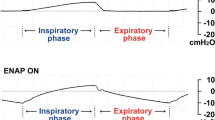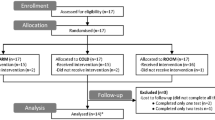Abstract
A double-blind paired protocol was used to evaluate, in eight male volunteers, the effects of the endogenous opiate antagonist naloxone (NAL; 0.05 mg· kg−1) on cardiovascular responses to 50° head-up tilt-induced central hypovolaemia. Progressive central hypovolaemia was characterized by a phase of normotensive-tachycardia followed by an episode of hypotensive-bradycardia. The NAL shortened the former from 20 (8–40) to 5 (3–10) min (median and range; (P < 0.02). Control head-up tilt increased the means of thoracic electrical impedance [from 35.8 (SEM 2.1) to 40.0 (SEM 1.8) Ω; P < 0.01 of heart rate [HR; from 67 (SEM 5) to 96 (SEM 8) beats · min−1, P < 0.02], of total peripheral resistance [TPR; from 25.5 (SEM 3.2) to 50.4 (SEM 10.5)mmHg min 1−1,P < 0.05] and of mean arterial pressure [MAP; from 96 (SEM 2) to 101 (SEM 2)mmHg, P < 0.02]. Decreases were observed in stroke volume [from 65 (SEM 12) to 38 (SEM 9) ml, P < 0.01], in cardiac output [from 3.7 (SEM 0.7) to 2.5 (SEM 0.5) 1 · mint, P < 0.01], in pulse pressure [from 55 (SEM 4) to 37 (SEM 3)mmHg, P < 0.01] and in central venous oxygen saturation [from 73 (SEM 2) to 59 (SEM 4)%, P < 0.01]. During NAL, mean HR increased from 70 (SEM 3); n.s. compared to control) to only 86 (SEM 9) beats · min−1 (P < 0.02 compared to control) and MAP remained stable. The episode of hypotensive-bradycardia appeared as mean control HR decreased to 77 (SEM 7)beats · min−1, TPR to 31.4(SEM 7.7)mmHg · min · 1−1 and MAP to 60 (SEM 5)mmHg (P < 0.01), and the volunteers were tilted supine. Cardiovascular effects of naloxone on central hypovolaemia included a reduced elevation of HR and blood pressures and provocation of the episode of hypotensive-bradycardia.
Similar content being viewed by others
References
Almquist A, Goldenberg IF, Milstein S, Chen M-, Chen X, Hansen R, Gornick CC, Benditt DG (1989) Provocation of bradycardia and hypotension by isoproterenol and upright posture in patients with unexplained syncope. N Engl J med 320:346–351
Burke SL, Dorward PK (1988) Influence of endogenous opiates and cardiac afferents on renal nerve activity during haemorrhage in conscious rabbits. J Physiol Lond 402:9–27
Caffrey JL, Wooldridge CB, Gaugl JF (1986) Naloxone enhances myocardial responses to isoproterenol in dog isolated heartlung. Am J Physiol 250:749–754
Dripps RD, Eckenhoff JE, Vandam LD (1957) Guides to preanesthetic medication. in: Dripps RD, Eckenhoff JE, Vandam LD (eds) Introduction to anesthesia. The principles of safe practice. Saunders Philadelphia, pp 9–16
Evans RG, Ludbrook J, Potocnik SJ (1989a) Intracisternal naloxone and cardiac nerve blockade prevent vasodilatation during simulated haemorrhage in awake rabbits. J Physiol Lend 409:1–14
Evans RG, Ludbrook J, Van Leeuwen AF (1989b) Role of central opiate receptor subtypes in the circulatory responses of awake rabbits to graded caval occlusions. J Physiol Lond 419:15–31
Foldager N, Bonde-Petersen F (1988) Human cardiovascular reactions to simulated hypovolaemia, modified by the opiate antagonist naloxone. Eur J Appl Physiol 57:507–513
Goldenberg, IF, Almquist A, Dunbar DN, Milstein S, Ptitzker MR, Benditt DG (1987) Prevention of neurally-mediated syncope by selective beta- 1-adrenoceptor blockade. Circulation 76 [Suppl 4]: IV-133 (abstract no. 0526)
Hanel B, Clifford PS, Secher NH (1994) Restricted post-exercise pulmonary diffusion capacity does not impair maximal transport for oxygen. J Appl Physiol 77:2408–2412
Jaffe JH, Martin WR (1990) Opioid analegesics and antagonists. In. Gilman AG, Rall TW, Nies AS, Taylor, P (eds) Goodman and Gilman's; the pharmacological basis of therapeutics. Pergamon Press, New York, pp 485–521
Ludbrook J, Rutter PC (1988) Effect of naloxone on haemodynamic responses to acute blood loss in unanaesthetized rabbits. J Physiol Lond 400:1–14
Madsen P, Iversen H, Secher NH (1993a) Central venous oxygen saturation during hypovolaemic shock in humans. Scand J Clin Lab Invest 53:67–72
Madsen P, Olesen HL, Klokker M, Secher NH (1993b) Peripheral venous oxygen saturation during head-up tilt induced hypovolaemic shock in humans. Scand J Clin Lab Invest 53:411–416
Matzen S, Secher NH (1993) Cardioinhibitory-vasodepressor response to head-up tilt without hypoxaemia or myocardial ischaemia. Clin Physiol 13:281–288
Matzen S, Schifter S, Radvansky J, Knigge U, Warberg J, Secher NH (1991) Calcitonin gene-related peptide (CGRP) and leg vascular resistance during head-up tilt induced hypovolaemic shock in man. Acta Physiol Scand 142:313–318
Matzen S, Secher NH, Knigge U, Bach FW, Warberg J (1992) Pituitary-adrenal responses to head-up tilt in humans: effect of H1- and H2-receptor blockade. Am J Physiol 263:156–163
Matzen S, Secher NH, Knigge U, Bach FW, Warberg J (1993) Effect of diazepam on endocrine and cardiovascular responses to head-up tilt in humans. Acta Physiol Scand 148:143–151
Milstein S, Buetikofer J, Dunnigan A, Benditt DG, Gornick C, Reyes WJ (1990) usefulness of disopyramide for prevention of upright tilt induced hypotension and bradycardia. Am J Cardiol 65:1939–1944
Pawelczyk JA, Matzen S, Friedman DB, Secher NH (1994) Cardiovascular and hormonal responses to central hypovolaemia in humans. In: Secher NH, Pawelczyk JA, Ludbrook J (eds) Blood loss and shock. Edward Arnold, London, pp 25–36
Perko G, Payne G, Linkis P, Jorgensen LG, Landow L, Warberg J, Secher NH (1994) Thoracic impedance and pulmonary atrial natriuretic peptide during head-up tilt induced hypovolaemic shock in humans. Acta Physiol Scan 150:449–454
Perna GP, Ficola U, Salvatori MP, Stanislao M, Vigna C, Villella A, Russo A, Fanelli R, Vettori PGP, Loperfido F (1990) Increase of plasma beta endorphins in vasodepressor syncope. Am J Cardint 65:929–930
Rowell LB, Blackmon JR (1989) Hypotension induced by central hypovolaemia and hypoxaemia. Clin Physiol 9:269–277
Rubin P, Blaschke TF, Guilleminault C (1981) Effect of naloxone, a specific opioid inhibitor, on blood pressure fall during sleep. Circulation 63:117–121
Rubin PC, McLean K, Reid JL (1983) Endogenous opioids and baroreflex control in humans. Hypertension 5:535–538
Salerno TA, Milne B, Jhamandas KH (1981) Hemodynamic effects of naloxone in hemorrhagic shock in pigs. Surg Gynecol Obstet 152:773–776
Sander-Jensen K, Mehlsen J, Secher NH, Bach FW, Bie P, Giese T, Schwartz TW, Trap-Jensen J, Warberg J (1987) Progressive central hypovolemia in man-resulting in a vasovagal syncope? Haemodynamic and endocrine variables during venous tourniquets of the thighs. Clin Physiol 7:231–242
Schadt JC, Ludbrook J (1991) Hemodynamic and neurohumoral responses to acute hypovolemia in conscious mammals Am J Physiol 260:305–318
Schobel HP, Oren RM, Mork AL, Ferguson DW (1992) Naloxone potentiates cardiopulmonary baroveflex sympathetic control in normal humans. Circ Res. 70:172–183
Secher NH, Perko G, Madsen P, Musson F (1994) Treatment of hypovolaemic shock: monitoring central blood volume. In: Secher NH, Pawelczyk JA, Ludbrook J (eds) Blood loss and shock. Edward Arnold, London, pp 165–172
Siegel S, Castellan NJ (1988) Nonparametric statistics. McGrawHill, New York, pp 235–245
Vargish T, Reynolds DG, Gurdll NJ, Lechner RB, Holaday JW, Faden AI (1980) Naloxone reversal of hypovolemic shock in dogs. Circ Shock 7:31–38
Viveros OE, Diliberto EJ, Hasum E, Chang KJ (1979) Opiate-like materials in the adrenal medulla: evidence for storage secretion with catecholamines. Mol Pharmacol 16:1101–1108
Author information
Authors and Affiliations
Rights and permissions
About this article
Cite this article
Madsen, P., Olesen, H.L., Secher, N.H. et al. Naloxone-provoked vaso-vagal response to head-up tilt in men. Eur J Appl Physiol 70, 246–251 (1995). https://doi.org/10.1007/BF00238571
Accepted:
Published:
Issue Date:
DOI: https://doi.org/10.1007/BF00238571




